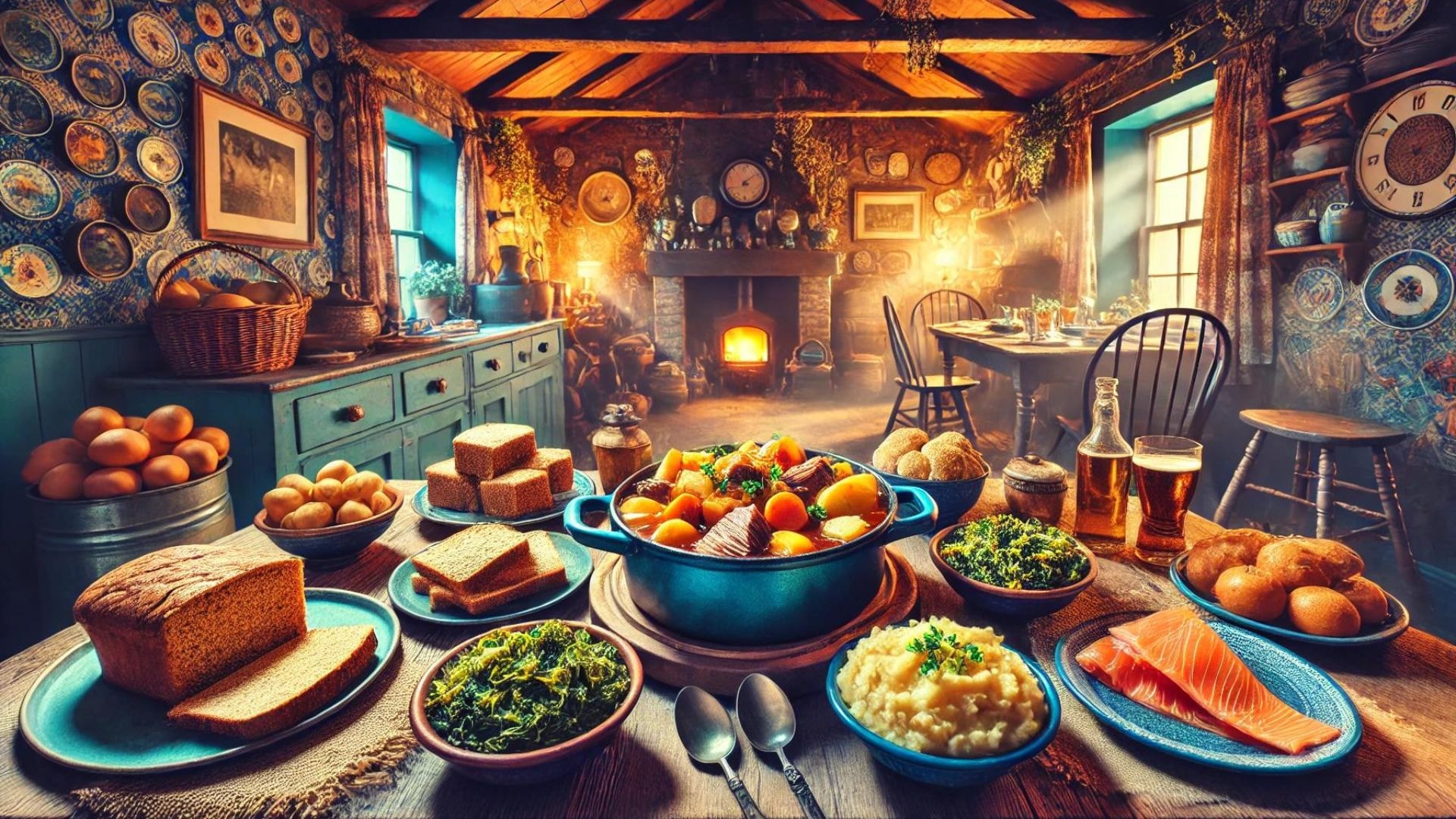
Irish cuisine is a flavorful reflection of its farming heritage, deeply rooted in history and tradition. The diet mainly includes potatoes, meats like beef and lamb, and fresh seafood from its extensive coastline. Staple dishes are both hearty and comforting, exemplifying Ireland's culinary traditions.
From a full Irish breakfast to a warm bowl of Irish stew, the meals are rich and satisfying. Seasonal vegetables like cabbage and kale accompany many dishes, showcasing the local produce.
Having spent time in Ireland myself, I've enjoyed these dishes firsthand. The warmth of a freshly baked soda bread, the richness of a well-made stew—it’s food that truly comforts the soul. Each meal shared with friends there felt like a celebration of Irish culture and hospitality. While these are some of the delightful aspects of Irish food, it's also interesting to learn about what not to eat in Ireland during your visit.
Famous Dishes Irish People Eat
Famous dishes Irish people eat include traditional Irish stew, Irish soda bread, and colcannon. Irish cuisine is rooted in hearty, simple ingredients like potatoes, cabbage, and meat, reflecting the country’s agricultural traditions. Popular meals often feature stews, breads, and mashed potato bread dishes that have been staples for generations. Whether enjoying a bowl of warming traditional Irish stew or a slice of buttered Irish soda bread, these dishes provide a taste of Ireland’s rich culinary history. Additional favorites include boiled bacon, smoked salmon, and Irish bacon, each offering a unique flavor to the palette of traditional Irish dishes.
Irish Stew
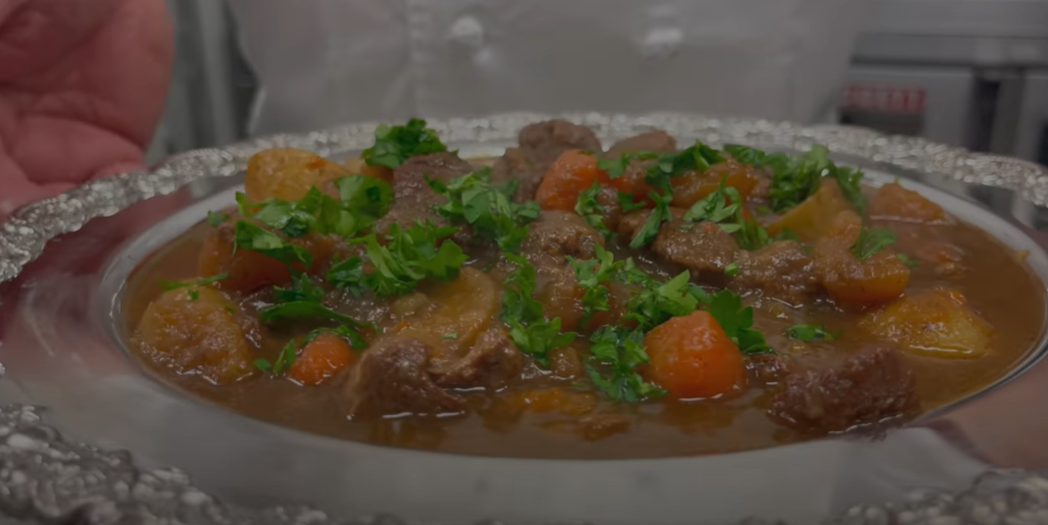
Irish stew, a beloved traditional Irish food, epitomizes the essence of Irish comfort food. Made from lamb, potatoes, onions, and carrots, this stew is known for its rich flavors and tender meat, which come from slow-cooking over low heat.
It is a common feature at dinner tables during Ireland's chilly months, offering warmth and satisfaction. Irish stew is not just food; it's a piece of culinary heritage, often served during family reunions and festive celebrations.
-
Main Ingredients: Lamb, potatoes, onions, carrots, and sometimes parsley for garnish.
-
Cooking Technique: Slow simmered to allow the flavors to meld beautifully.
The enjoyment of Irish stew is akin to receiving a warm, hearty embrace from Irish culture. It teaches the importance of patience and the art of slow cooking, emphasizing that some things can't be rushed—much like life’s finer moments.
Boxty
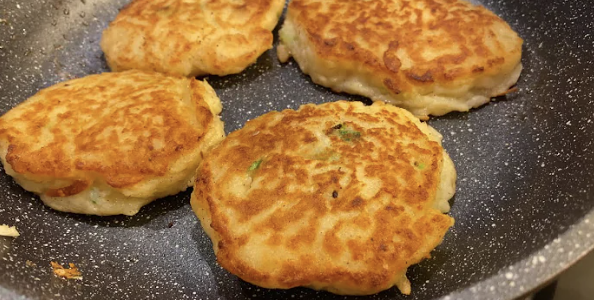
Boxty, a delightful Irish potato pancake, is celebrated for its versatility and delicious taste. This dish can adapt to any meal, making it a cherished recipe across Ireland, especially in rural areas where potatoes are a dietary staple.
Traditionally, Boxty is served with a dollop of fresh cream or as a side to mains like smoked fish or grilled meats, enhancing the overall meal with its unique texture and flavor.
-
Ingredients: Grated raw potatoes, mashed cooked potatoes, flour, milk, and a pinch of salt.
-
Method: The ingredients are combined into a thick batter and fried until golden.
Preparing Boxty is a beloved ritual in many Irish homes, often bringing family members together in the kitchen. This dish not only fills the stomach but also warms the heart with memories of shared meals and laughter.
Soda Bread

Soda bread is an integral part of Irish cuisine, known for its quick and easy preparation. This bread is unique in its use of baking soda as a leavening agent instead of yeast, which gives it a distinctive texture and slightly tangy taste.
Ideal for any time of day, soda bread can be found in nearly every Irish home, often served with butter, jam, or as an accompaniment to a main meal.
-
Key Ingredients: All-purpose flour, baking soda, salt, and buttermilk.
-
Baking Insight: The dough should be handled as little as possible to keep it tender.
Baking soda bread is a ritualistic experience that ties present generations to their ancestors. It’s more than just a staple food; it’s a symbol of Irish resilience and adaptability, using minimal ingredients to produce something delicious and filling.
The simplicity of soda bread is what makes it so special; it’s a reminder that in both baking and in life, sometimes the simplest things can be the most satisfying. Enjoying a slice of freshly baked soda bread, especially during a family gathering, reinforces the comfort and connection that traditional Irish foods provide.
Colcannon
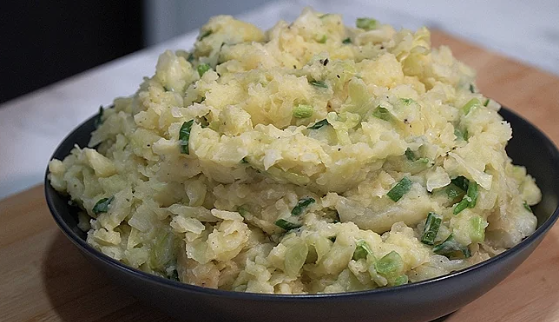
Colcannon is a traditional Irish dish that perfectly showcases the homely and rustic nature of Irish cuisine. Made from mashed potatoes mixed with kale or cabbage, and often enhanced with scallions, milk, and butter, it epitomizes comfort food in Ireland.
This dish is especially popular during Halloween but is enjoyed year-round as a side dish that complements both meat and fish entrées. It is not just a dish but a part of many Irish holiday traditions, often containing hidden tokens for fortune-telling.
-
Ingredients: Potatoes, kale or cabbage, butter, milk, and scallions.
-
Preparation Tips: Ensure the potatoes are fluffy and well-seasoned for the best texture.
The first time I made Colcannon for an Irish-themed dinner, the rich flavors and creamy texture brought smiles and contented sighs from everyone at the table. It was a reminder of the simple joys that good, hearty food can bring.
Black Pudding
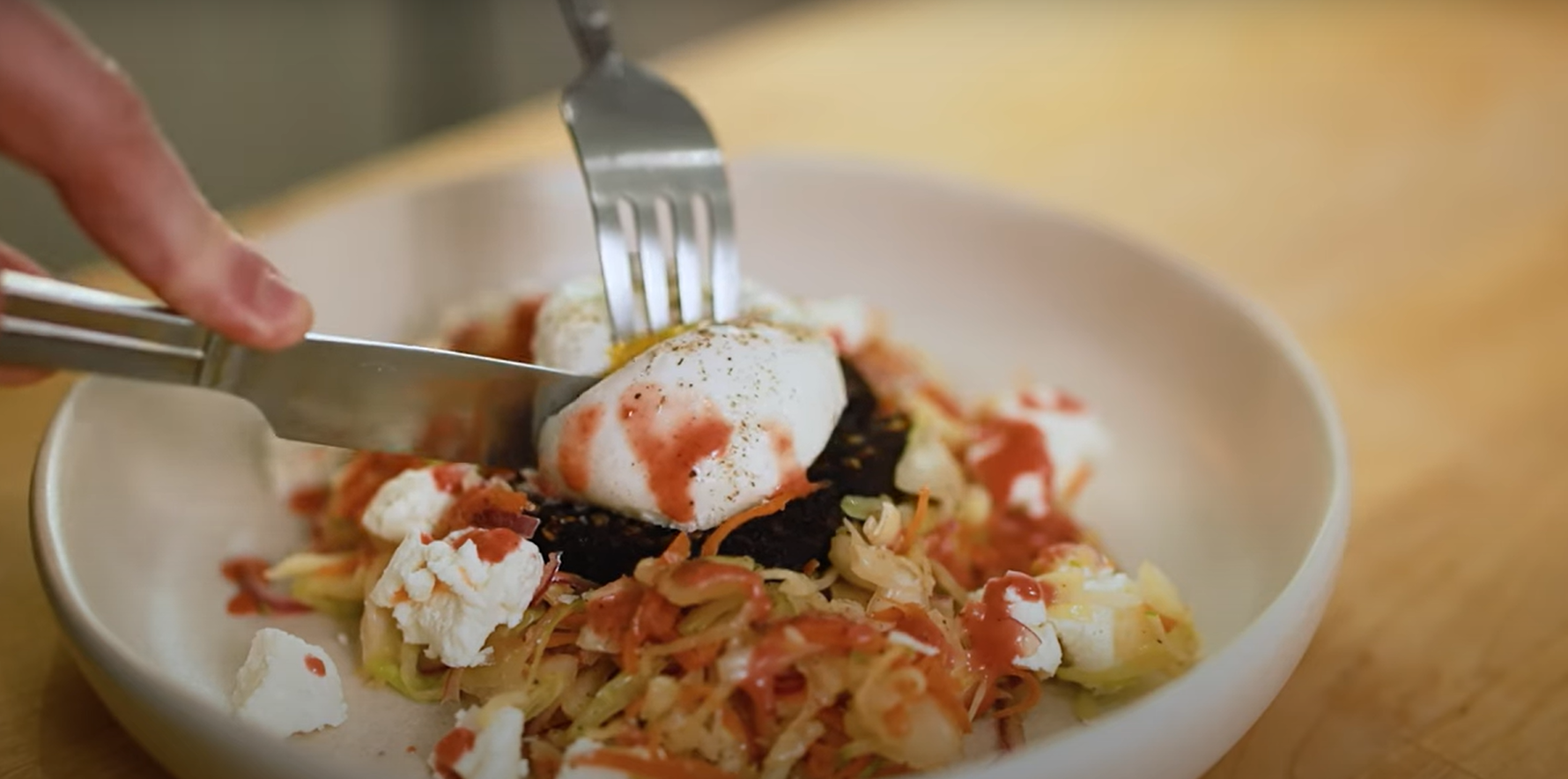
Black Pudding is an integral part of the traditional Irish breakfast, known locally as "drisheen". This savory blood sausage is made from pork blood, pork fat or beef suet, and oatmeal, creating a distinctive rich flavor.
Typically served in thick slices, black pudding is not only a breakfast staple but also a popular addition to gourmet dishes in modern Irish cuisine.
-
Ingredients: Pork blood, oatmeal, fat, and various spices.
-
Cooking Method: Fried until the outside is crisp.
Cooking black pudding at home might sound daunting, but it’s an exhilarating experience that connects you to a deeper, almost forgotten part of culinary history. When I first tried it in a small Irish cafe, its robust flavor immediately set it apart from any other sausage I had tasted, encapsulating the boldness of traditional Irish flavors.
What Do Irish People Eat for Breakfast?
Famous breakfast dishes Irish people eat include the full Irish breakfast, porridge, soda bread, and boxty. These traditional breakfast options reflect Ireland’s history of simple, hearty meals that provide sustenance for the day ahead. Irish breakfasts are known for their generous portions and variety, offering a blend of savory and filling options to start the day. These dishes are just some of the cultural staples that contribute to the fun facts about Ireland that everyone should know.
What is a Full Irish Breakfast
A full Irish breakfast is a hearty meal that typically includes bacon, sausages, eggs, black and white pudding, grilled tomatoes, baked beans, and toast or soda bread. Often served with tea or coffee, this breakfast is a staple in Irish households and hotels.
The meal is designed to be filling, providing energy for a long day of work or travel. Black and white pudding, which are traditional blood sausages, are unique to the Irish breakfast and provide a savory richness. This meal is often enjoyed on weekends or holidays and is a popular offering at Irish bed and breakfasts.
Porridge
Porridge, made from oats, is a simple and nutritious breakfast that has been a staple in Ireland for centuries. It’s typically cooked with water or milk and can be sweetened with honey, sugar, or fruits like berries and bananas. Some people add a pinch of salt for a more savory version. Irish porridge is known for being thick and creamy, providing a warming start to the day, especially during the colder months. It’s often served with a drizzle of cream or butter, making it both comforting and filling. Porridge is a healthy, energy-boosting breakfast option that’s easy to make and customize.
Soda Bread
Soda bread, a quick bread made with baking soda instead of yeast, is commonly enjoyed at breakfast in Ireland. Often served toasted with butter or jam, soda bread is a versatile addition to any Irish breakfast.
The bread’s dense texture pairs well with both sweet and savory toppings, making it ideal for breakfast or as an accompaniment to a full Irish breakfast. Some versions of soda bread include raisins or seeds, adding a touch of sweetness or extra flavor. It’s a quick and easy bread to bake, which is why it has remained a popular choice in Irish kitchens for generations.
Boxty
Boxty is a traditional Irish potato pancake, often served as part of a breakfast meal. It’s made by grating raw potatoes and mixing them with mashed potatoes, flour, and buttermilk before frying. The result is a crispy, golden pancake that is both filling and flavorful.
Boxty can be enjoyed on its own or as a side dish with eggs, bacon, or sausages. This versatile dish has regional variations across Ireland, with some versions being more like a pancake, while others resemble a hash brown. Boxty is especially popular in the northern and western regions of Ireland, where potatoes have historically been a dietary staple.
What Do Irish People Eat During Special Occasions?
Famous dishes Irish people eat include Irish stew, soda bread, colcannon, and black pudding. These traditional foods reflect Ireland's rich culinary heritage and adapt to both everyday meals and festive occasions.
Irish cuisine centers around hearty, filling dishes that make extensive use of potatoes, meat, and dairy products. Irish stew, perhaps the most iconic, is a nourishing mix of lamb, potatoes, and onions, stewed to perfection. Soda bread, a quick bread that uses baking soda for leavening, accompanies many meals, providing a dense, satisfying complement to the rich, often meaty flavors of Irish dishes. This dish, along with other traditional foods, captures the essence of Irish culinary heritage, one of the many intriguing aspects of Ireland.
Christmas Day
During Christmas, the Irish table boasts a lavish spread that celebrates both the holiday and the bounty of Irish farms. Roast turkey or goose stands at the center, often accompanied by ham glazed with honey and cloves.
-
Christmas dinner typically includes a variety of side dishes such as roasted potatoes, brussels sprouts, and carrots.
-
Rich, spiced desserts like Christmas pudding and mince pies conclude the meal, often flambéed with brandy for a festive presentation.
The lead-up to the holiday sees kitchens busy with baking and preparations, with families coming together to cook and share meals. Post-Christmas meals often involve creative uses of leftovers, crafting dishes like turkey and stuffing sandwiches or potato pancakes.
St. Patrick's Day
St. Patrick’s Day is synonymous with Irish culture and its cuisine plays a central role in the celebrations. The day often starts with a full Irish breakfast—sausages, bacon, eggs, tomatoes, and black and white pudding.
-
Lunch include a bowl of hearty Irish stew or bacon and cabbage, a dish that traces back to old Irish traditions.
-
In many homes and pubs, trays of soda bread and bowls of colcannon—mashed potatoes with kale or cabbage—are served.
As the parades wind down, the evening sees people gathering for a meal that’s both a celebration of Irish heritage and a chance to enjoy good food with family and friends. Desserts typically feature ingredients like oats, cream, and whiskey, such as in a whiskey-laced Irish coffee or oatmeal cream pies.
Everyday Meals
On typical days, Irish meals emphasize simplicity and nutritional balance. Breakfast often includes porridge or oatmeal, topped with a dollop of Irish butter or cream and some local berries or honey.
-
For lunch, a simple sandwich or soup made with seasonal vegetables is common.
-
Dinner could be a serving of fish like salmon or cod, served with a side of vegetables and potatoes in some form, reflecting the Irish love for this versatile tuber.
The approach to everyday eating in Ireland is practical yet flavorful, ensuring that meals are both satisfying and nutritious. Weekends might see more elaborate cooking, often with family recipes that have been passed down through generations.
Festivals and Fairs
At festivals and fairs, food stalls and trucks offer a taste of both traditional and modern Irish cooking. Here, one might enjoy a lamb burger with a mint sauce or a serving of seafood chowder, rich with fresh, local catch.
-
Specialty foods like artisan cheeses and smoked meats are also popular, showcasing Ireland's craftsmanship in food production.
-
Sweet treats such as scones, apple tarts, and barmbrack (a fruit bread) provide a sweet finish to the festive meals.
These events are a celebration of local produce and culinary skills, drawing people from all walks of life to enjoy the flavors of Ireland in a lively, communal setting. They also serve as a showcase for Ireland’s culinary innovations, blending traditional tastes with new influences.
On the Coast
In coastal regions, the Irish diet prominently features seafood. Fresh fish like mackerel, herring, and sea bass are commonly found on dinner plates, often grilled or baked with a light seasoning to enhance their natural flavors.
-
Seaweed, once a staple in the Irish diet, is enjoying a resurgence, appearing in salads, soups, and as a seasoning.
-
Mussels and oysters are enjoyed, particularly during months with an 'r' in their name, celebrated with festivals and gatherings.
This connection to the sea is reflected in the simplicity and freshness of coastal Irish cooking, where the quality of ingredients speaks for itself. Meals are often punctuated with stories of the sea, tying the food to the culture and history of Ireland’s coastal communities.
What Do Irish People Eat for Sweets?
Famous dishes Irish people eat include Irish stew, soda bread, colcannon, apple cake, barmbrack, porter cake, and lemon curd tart. These traditional meals and desserts are beloved in Irish homes and offer a taste of the country’s culinary heritage. Each dish has its own unique story, rooted in Ireland’s agricultural and cultural history.
Irish Stew
Irish stew is a classic dish made with lamb or beef, potatoes, carrots, and onions, all slow-cooked to perfection. This hearty meal is particularly enjoyed during the colder months, providing a comforting and filling dish.
The simplicity of its ingredients reflects Ireland’s agricultural history, where families relied on locally sourced lamb and root vegetables. The slow cooking process tenderizes the meat, and the stew thickens over time, making it rich in flavor. Irish stew is often served with soda bread to soak up the savory broth, and it remains a staple in Irish households and pubs, particularly during colder months.
Soda Bread
Soda bread is a simple, quick bread made with baking soda instead of yeast. The basic ingredients include flour, buttermilk, and salt, creating a dense but delicious loaf that’s best enjoyed with butter. Traditionally, soda bread was baked daily in Irish homes because it could be made quickly without needing to wait for yeast to rise.
Some variations include raisins or caraway seeds for added flavor. Soda bread is typically formed into a round shape and marked with a cross on top, a practice said to bless the bread or ward off evil spirits. It is perfect for pairing with soups, stews, or just enjoyed fresh out of the oven.
Colcannon
Colcannon is a creamy mashed potato dish mixed with cabbage or kale. It's a comforting side dish, often served alongside meat and popular during festive occasions like Halloween. This dish has humble origins as a peasant food, making the most of Ireland’s plentiful potato crop.
The potatoes are mashed with butter and milk for creaminess, while the cabbage or kale adds a slightly bitter contrast to the richness. Colcannon is sometimes served with a well of melted butter in the center for extra indulgence. In Irish tradition, small charms like rings or coins were hidden in the dish on Halloween night to predict the future of those at the dinner table.
Apple Cake
Apple cake is a traditional Irish dessert made with tart cooking apples and warm spices like cinnamon. It’s often served with a dusting of sugar and a dollop of whipped cream, making it a favorite for afternoon tea.
The combination of tart apples and sweet, spiced batter creates a delightful balance of flavors. Traditionally, Irish apple cake was baked in cast-iron pots over an open fire, giving it a rustic texture and flavor. The use of Bramley apples, which are common in Ireland, gives the cake a tangy kick that contrasts perfectly with its sweetness. It’s a popular dessert in autumn when apples are harvested and is often enjoyed with a hot cup of tea.
Barmbrack
Barmbrack is a fruit-filled bread, typically enjoyed around Halloween. It contains dried fruits like raisins and currants, and sometimes small tokens are baked inside, symbolizing good fortune for those who find them.
This bread has a rich history in Irish folklore, with each token hidden inside the loaf representing different fates for the finder. The dough is lightly sweetened, and the dried fruits add a burst of flavor in each bite. Traditionally, barmbrack was served with butter and a cup of tea, especially during Halloween celebrations. Today, it’s enjoyed year-round but holds a special place during the autumn season as part of Irish Halloween customs.
Porter Cake
Porter cake is a rich, moist fruitcake made with stout beer, typically a dark Irish porter. This cake is filled with dried fruits and has a deep, malty flavor, making it a popular choice for festive occasions. The use of porter or stout adds a complex richness to the cake, enhancing the flavors of the dried fruits like raisins, sultanas, and currants.
Spices such as cinnamon and nutmeg are often added to deepen the cake’s flavor profile. Porter cake is commonly enjoyed during Christmas or other celebrations and is typically served with a cup of strong Irish tea. The dense texture and long shelf life make it an excellent treat to have on hand during the festive season.
Lemon Curd Tart
Lemon curd tart is a zesty dessert featuring a buttery shortcrust base and a smooth, tangy lemon curd filling. It’s often topped with powdered sugar and is a refreshing end to any meal. The sharpness of the lemon curd contrasts beautifully with the richness of the buttery crust, making it a balanced and flavorful dessert.
While it’s not as old a tradition as other Irish desserts, lemon curd tart has become popular due to the refreshing citrus flavors that provide a lighter finish to a meal. It’s often made with fresh lemons for a bright, tangy taste and is sometimes garnished with whipped cream or fresh berries. This dessert is perfect for special occasions or an elegant afternoon tea.
Popular Ingredients in Irish Cooking
Popular ingredients in Irish cooking include potatoes, butter, and cabbage. Irish cuisine is rooted in hearty, simple dishes that reflect the country's agrarian past. The use of fresh, locally sourced ingredients is central to the tradition, with each item bringing its own distinctive flavor and texture. From hearty stews to comforting breads, these ingredients form the foundation of many well-loved dishes in Ireland.
Now let’s explore some of the most common ingredients in detail:
Potatoes
Potatoes are a cornerstone of Irish cuisine, introduced in the late 16th century. They became a staple due to their versatility and ability to thrive in Ireland’s cool, damp climate. Potatoes are used in many traditional dishes, such as colcannon (mashed potatoes mixed with cabbage or kale) and boxty (potato pancakes). They can be boiled, mashed, roasted, or made into soups and stews.
Butter
Irish butter is renowned for its creamy, rich taste and is a crucial ingredient in many Irish dishes. Made from the milk of grass-fed cows, it has a high-fat content, making it perfect for baking, cooking, or spreading on bread. Irish butter is often used in soda bread, pastries, and to enhance the flavor of vegetables like potatoes and cabbage.
Cabbage
Cabbage is another staple in Irish cuisine, known for its use in traditional dishes like colcannon and bacon and cabbage. It’s often boiled, but can also be sautéed or fermented into dishes like sauerkraut. Cabbage adds texture and nutritional value to meals, being high in fiber and vitamins.
Oats
Oats have long been a dietary staple in Ireland, used primarily for porridge, but also in baking. Traditional Irish oatcakes are made from ground oats, water, and salt. Oats are also used in black and white pudding, which are types of sausage.
Lamb
Lamb is a traditional meat in Irish cooking, used in stews, roasts, and casseroles. Irish lamb is grass-fed, giving it a distinct flavor. One popular dish is Irish stew, which combines lamb with potatoes, onions, and carrots, simmered slowly to develop a rich, hearty flavor.
Irish Seaweed (Carrageen Moss)
Seaweed, particularly carrageen moss, is a traditional Irish ingredient often used as a natural thickener in soups and desserts. It’s harvested along the Irish coast and is prized for its nutritional value, rich in vitamins and minerals. Carrageen moss is often used to make a pudding or added to broths.
What are the Modern Irish Food Trends?
Modern Irish food trends include farm-to-table dining, innovative use of seaweed, and the rise of artisanal products. Irish cuisine has evolved in recent years, incorporating contemporary techniques and global influences while still emphasizing traditional ingredients. Chefs and home cooks alike are focusing on sustainability, local sourcing, and creative ways to present Irish staples.
Let’s dive into the key trends in modern Irish cuisine:
Farm-to-Table Dining
The farm-to-table movement is thriving in Ireland, with an emphasis on using locally grown, seasonal produce. Many restaurants and food markets focus on sustainable practices, sourcing meat, dairy, and vegetables from nearby farms. This trend not only supports local agriculture but also ensures freshness and quality in dishes. It has led to the resurgence of traditional Irish ingredients like heritage vegetables and free-range meats. The farm-to-table movement also encourages the preservation of traditional farming methods and heirloom varieties of crops, ensuring that Ireland’s agricultural heritage remains alive.
Many chefs are building direct relationships with farmers, fostering a deeper understanding of the origins of their ingredients. This approach allows restaurants to create menus that reflect the changing seasons, offering dishes that are not only fresh but also environmentally conscious. Farmers' markets have become central hubs for communities, where consumers can engage directly with producers, gaining insight into how their food is grown and raised. The emphasis on ethical farming and transparency has strengthened the connection between the land and the plate.
Innovative Use of Seaweed
Ireland’s abundant coastline provides access to a variety of seaweed, which is becoming increasingly popular in modern Irish cuisine. Chefs are experimenting with different types of seaweed, such as dulse, kelp, and carrageen moss, incorporating them into everything from soups to snacks. Seaweed is appreciated for its umami flavor and nutritional benefits, including being rich in iodine and antioxidants. Seaweed is not only used in savory dishes but has also found its way into sweet creations, such as desserts and baked goods, adding unique textures and subtle flavors.
Additionally, it is often incorporated into healthy snacks like seaweed crisps, which are becoming increasingly popular in Ireland. As more people seek out nutrient-dense, sustainable ingredients, seaweed’s versatility and health benefits have made it a sought-after component in modern Irish cooking. Its ability to enhance both the taste and nutritional profile of dishes has solidified its place as a staple in many innovative Irish kitchens today. Furthermore, seaweed’s low environmental impact makes it an attractive option for eco-conscious chefs and consumers, cementing its role in Ireland’s sustainable food movement.
Rise of Artisanal Products
Irish artisanal products, including cheeses, breads, and craft beers, are experiencing a surge in popularity. Small-scale producers are focusing on quality and traditional methods to create unique products with a modern twist. Irish farmhouse cheeses, sourdough breads, and locally brewed craft beers are now staples in gourmet food markets and high-end restaurants. The rise of artisanal products reflects a growing demand for authenticity and craftsmanship in Irish food culture.
Many small producers are returning to time-honored techniques, such as handcrafting cheese and using traditional fermentation methods in brewing, while also embracing innovation. Local varieties of goat and cow’s milk cheeses, as well as experimental sourdough flavors, are becoming more common, catering to a discerning audience that values sustainability and local sourcing.
Additionally, the craft beer movement in Ireland has flourished, with brewers creating distinctive, regionally-inspired ales, stouts, and lagers that capture the essence of the Irish terroir. The renewed focus on craftsmanship not only elevates the quality of these products but also supports local economies, driving the popularity of Irish artisanal goods beyond the country's borders.
Fusion Cuisine
Irish chefs are increasingly blending traditional Irish ingredients with global flavors, resulting in exciting fusion dishes. Classic Irish staples like lamb and seafood are being paired with spices and techniques from Asia, the Middle East, and other parts of Europe. This trend reflects Ireland’s growing multiculturalism and the influence of international culinary trends.
Health-Conscious Cooking
Modern Irish cuisine also sees a shift toward health-conscious eating, with an emphasis on whole, unprocessed foods. This trend includes the use of gluten-free grains, plant-based proteins, and a focus on reducing processed sugars. Many Irish restaurants are offering vegetarian, vegan, and gluten-free options, catering to a wider range of dietary needs.
Fermentation Revival
Fermentation is making a comeback in modern Irish cooking, with chefs reviving age-old preservation methods for vegetables, dairy, and even drinks. Sauerkraut, kefir, and kombucha are being incorporated into dishes for their health benefits and distinctive tangy flavors. This trend ties into the broader movement towards sustainability and reducing food waste.
FAQs On What Do Irish People Eat?
1. What are some common foods in Ireland?
Irish cuisine includes staples like potatoes, cabbage, and meat, especially lamb and beef. Seafood is also popular, given Ireland's extensive coastline.
2. What is a traditional Irish meal?
A traditional Irish meal often features dishes such as Irish stew, made with lamb or mutton, potatoes, carrots, and onions. Another classic is colcannon, a mix of mashed potatoes and kale or cabbage.
3. What do Irish people eat for breakfast?
For breakfast, many Irish people enjoy a hearty full Irish breakfast that includes eggs, sausages, bacon, black and white pudding, mushrooms, and tomatoes, often accompanied by soda bread.
4. Are there any popular snacks in Ireland?
Popular snacks in Ireland include Tayto crisps, a beloved brand of Irish potato chips, and various types of scones and biscuits often enjoyed with tea.
5. What is a typical dessert in Ireland?
Typical Irish desserts include bread pudding, made with raisins, cinnamon, and nutmeg, and apple tart made with local apples and served with fresh cream.
